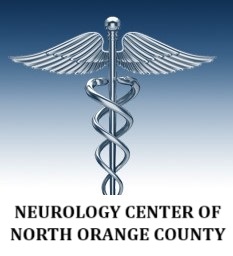How Alzheimer’s Research is Changing Patient Lives
The latest Alzheimer’s research has yielded some promising results. New medications and sophisticated tools used to diagnose this disease are giving hope to many who suffer from Alzheimer’s disease as well as their loved ones and caregivers. Although it’s too soon to be sure, a cure or preventative treatment for this disease may be just beyond the horizon.
History of Alzheimer’s disease research
In 1906, Dr. Alois Alzheimer first discovered symptoms of the neurodegenerative disease when he performed an autopsy on a female patient who had exhibited symptoms such as memory loss, odd behavior, and difficulty speaking. He found many unnatural clumps and tangles of fibers on her brain, which brain imaging has since identified as Amyloid plaques and Tau tangles. National institutes have since been founded dedicated to researching and treating this disease. Drug development is starting to make a noticeable impact on the brain cells of Alzheimer’s patients, and new Alzheimer’s drugs promise even more relief in the future.
Current Statistics
There are differing estimates on how many people in the U.S. have Alzheimer’s disease, but the general consensus is that at least 6 million people are affected, with most of them being at least 65 years old. A large percentage of this group eventually require lifestyle interventions and patient care to help them accomplish basic everyday tasks. Alzheimer’s is ranked as the seventh leading cause of death in the U.S. and is by far the most common form of dementia among senior citizens. Drug therapies are just now beginning to spearhead clinical interventions in the brain health of its patients. Recent improvements in brain scans have allowed aging research units and medical students to better understand how this disease works. It is also common for those who suffer from Alzheimer’s disease to suffer from one or more other forms of dementia, such as vascular dementia.
Reasons for Hope
A New Generation of Medications
One of the most promising elements of Alzheimer’s treatment is the FDA approval of medications such as Donanemab and Lecanemab. These drugs can help to significantly slow the progression of Alzheimer’s disease in patients who are in the early stages of dementia. Both drugs work in a similar fashion by targeting and attacking amyloid plaques in the brain, which are the key cause of Alzheimer’s disease. Alzheimer’s researchers also have other new medications waiting for approval from the Food and Drug Administration.
Cutting-Edge Diagnostic Tools
The latest group of diagnostic tools allows researchers to view the human brain in ways that were never before possible. PET scans (Positronic Emission Tomography) give caregivers the ability to identify Alzheimer’s disease in its early stages. New types of blood tests also allow researchers to see biomarkers that may indicate the onset of dementia.
A New Level of Knowledge
The latest wave of research into Alzheimer’s disease has afforded caregivers a more precise understanding of the condition and its underlying causes. This new level of comprehension allows researchers to find new ways to treat patients before the disease progresses into its later stages. Amyloid and Tau proteins have shown themselves to be key causes of Alzheimer’s disease, and recent advances in research are enabling more focused methods of treatment options.
New Ways of Treating Symptoms
Although an actual cure for Alzheimer’s disease may still be at least a generation away, new methods of treating this condition have appeared in recent years. Symptoms such as loss of memory, changes in behavior and general mental confusion can now be treated with a higher degree of effectiveness than they could have been in the past. These new treatments are improving the overall quality of living for those who suffer from the disease, as well as their loved ones and caregivers.
New Methods of Prevention
There is a growing body of research that shows that certain lifestyle choices may either accelerate or retard the progression of Alzheimer’s disease. A proper diet coupled with exercise can help to slow the growth of dementia, and more information on these factors is being published regularly.
Assistance for Caregivers
Caring for someone with Alzheimer’s disease can be a substantial burden on caregivers, whether they are paid or volunteering. Caregivers now have many new resources available, such as support groups, individual training, and translational research reports. There is now a focus on maintaining the mental health of caregivers as well as patients, as providing care can become physically and emotionally draining in many cases.
How the Lives of Patients Have Been Improved
Slowing the Growth of Alzheimer’s Disease and Other Forms of Dementia
New drugs such as those mentioned previously have shown themselves to be effective at slowing the growth of the disease in the majority of patients. This often means that patients with mild cognitive impairment can care for themselves for a longer period than they could before. This ultimately shortens the length of time that they need someone to care for them.
Enhanced Cognitive Functionality
There are also new medicines available now that can at least temporarily improve the memory and cognitive functions of those who suffer from Alzheimer’s disease. The efficacy of these drugs is almost certain to improve over time as new research becomes available. And when Alzheimer’s disease is diagnosed early, some drugs can also slow progression of the disease in the brain.
Better Lives for Patients and Caregivers
The recent advances in Alzheimer’s disease research coming from clinical trials have made life easier for both patients and those who care for them. More sources of support and comfort will become available as new research identifies the underlying causes of cognitive decline more clearly. Although it is too early to tell for sure, preventative drugs for this condition may be less than a generation away at this point.
Remaining Obstacles
Despite recent gains from new Alzheimer’s research, there is still no cure for Alzheimer’s disease. Alzheimer’s disease research is realistically at least ten years away from preventing or curing Alzheimer’s disease in most patients. This complex disease defies the odds of one single drug or treatment being able to treat the majority of patients. Alzheimer’s research is also attempting to address other psychological symptoms associated with the disease progression, such as depression, anxiety, and trouble sleeping.
Causes of Alzheimer’s
Alzheimer’s research has made enormous progress in recent years, and researchers now have a better understanding of how this disease originates. Several factors can affect the likelihood that Alzheimer’s will affect a given person, including genetic makeup, environmental conditions, and lifestyle. For example, those who drink heavily and those with Down Syndrome have much higher chances of getting the disease than others, and a family history of the disease can indicate a predisposition to this condition.
Initial Stages of Alzheimer’s Disease Progression
Complex changes in the brain must happen before patients experience a cognitive decline. Clinical trials found that these changes can happen at least ten years before the patient begins to experience its symptoms. In the early onset of the disease, Alzheimer’s patients begin to experience a variety of symptoms, including:
- The loss of cognitive functions, such as the ability to think and reason clearly
- Memory loss and other diminished mental capabilities
- Inability to find their way around, pay bills, and other tasks related to handling money
- Repeating questions and personality changes
Middle Stages of Alzheimer’s Disease Progression
After the initial stages of Alzheimer’s disease manifest themselves, memory loss becomes more severe and the capacity to properly detect smells and sounds becomes diminished. Those affected by the disease can have difficulty recognizing friends or family members, and some even suffer from hallucinations or delusions. Other symptoms include a general sense of paranoia and a tendency to start acting impulsively.
Later Stages of Alzheimer’s Disease Progression
Modern clinical neurology says that the later stages of Alzheimer’s disease are marked by unnatural buildups of certain types of proteins in the brain. These buildups eventually lead to Amyloid plaques and Tau tangles that cut off healthy neurons and cause them to die. This is just one of several complex variables that lead to neurodegenerative disorders.
Physical Factors
The majority of the damage occurs in the hippocampus and the entorhinal cortex, which is where memories are stored. In the final stages of the disease, much of the brain is dead and the remainder shrinks to a much smaller size. Those who are in the final stages of the disease are completely dependent upon others to help them perform everyday tasks, such as eating, bathing, and dressing. They may also become bedridden as their basic bodily functions, such as the ability to walk, shut down.
Clinical Trial Participation
Clinical trials relating to Alzheimer’s disease progression and other forms of dementia are ongoing. There are clinical trials for early-onset Alzheimer’s disease, mild cognitive impairment, Alzheimer’s treatment, brain swelling, Alzheimer’s drugs, brain bleeding, anti-amyloid drugs, and other related physical ailments such as heart disease and immune system disorders. Those who are looking to participate in one of these trials can contact the National Institute of Aging (NIA) for more information.
Conclusion
Alzheimer’s research has made enormous strides in recent years, but much remains unknown about this disease and its exact causes. New forms of brain scans are providing researchers with new ways to analyze and combat the disease, and new therapies are helping caregivers provide better care while taking better care of themselves as well. A cure or prevention for this disease is not likely imminent, but there are promising developments on the horizon. Accelerated approval for Alzheimer’s-related drugs created by pharmaceutical giants such as Eli Lilly may be able to more effectively treat beta amyloid buildups and prevent symptoms in those with a higher risk for the disease.



